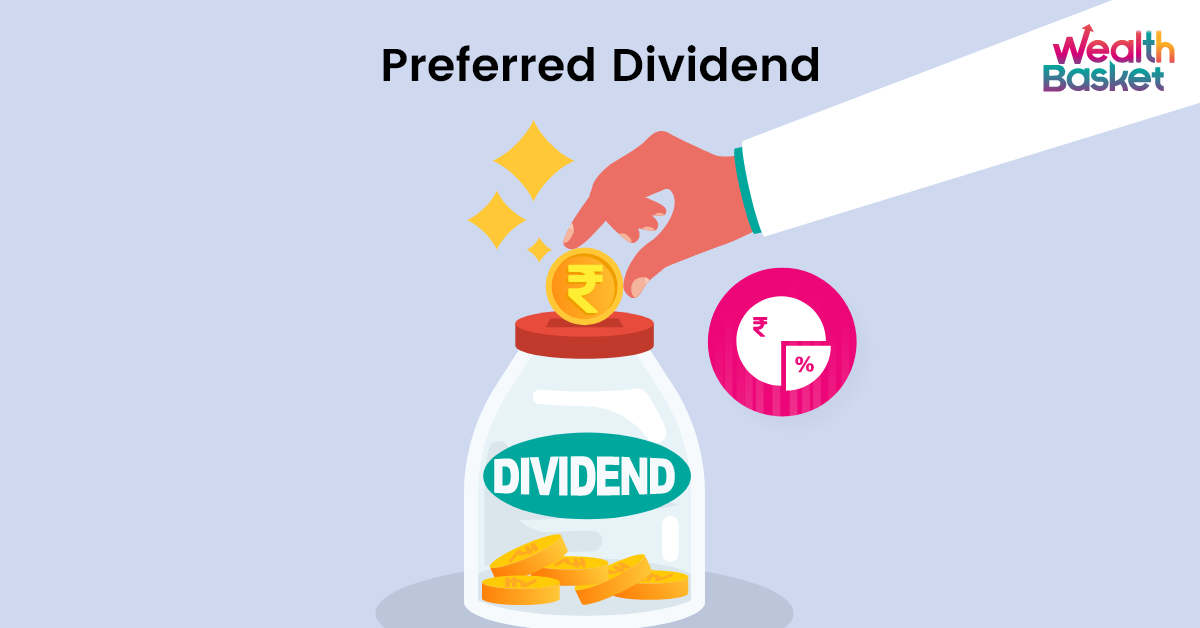There are two types of shares, equity shares and preference shares. Equity shares are well-known for offering partial ownership and voting rights. Preference shares, on the other hand, are popular mainly because of preferred dividends.
This article talks about the meaning of preferred dividends, dividends in arrears, features, calculation and an example of preference share dividends.
What Are Preferred Dividends?
Preferred dividends refer to the dividends received by preference shareholders as a reward for holding preference shares. A dividend means a part of a company’s profit distributed amongst shareholders.
After paying out to the creditors, the companies first go for paying dividends to the preferred shareholders over equity shareholders. The preference share dividend rate is determined and announced in advance and usually remains fixed during the life of preference shares. The companies also need to allocate funds for dividends in arrears.
Dividends In Arrears
Preference shareholders receive dividends every year that the company marks profit. However, the company may skip dividends if it doesn’t incur profit. Cumulative preference shares are those for which the company needs to pay the accumulated dividends in the coming year when it incurs profit in case there are unpaid dividends.
A dividend in arrears means the cumulative preference dividend which is yet to be paid to cumulative preference shareholders on the expected date.
For instance, ABC Limited issued 10,000 cumulative preference shares with a par value of ₹1,000 and prefixed a 10% dividend. It paid the said dividend to the shareholders in the first year. However, it couldn’t pay dividends for the second and third years. In this case, there are ₹20,00,000 (₹1,000*10%*10,000*2 years) of arrears of preference dividends.
Features Of Preferred Stock Dividends
Fixed dividend rates
Usually, preferred stockholders receive dividends based on fixed rates periodically. Unlike common stock dividends, preferred stock dividends do not alter each year based on company profits.
Higher rates of dividends
The preference share dividend yields are usually higher than those offered by equity shares because preference shares do not come with voting rights.
Preferential rights
Preferred shareholders have priority when it comes to receiving dividends, so companies must pay dividends on preferred shares before distributing any dividends to common stockholders.
How To Calculate Preferred Stock Dividends?
Here is the formula for preferred dividends.
Preferred stock dividends = Par value*Dividend rate*Number of preference shares
You can find the par value (face value) and dividend rate in the preferred stock prospectus.
Discover stocks that suit certain filter criteria and dive into details to check their WealthBaskets.
Preferred Dividends Example
Suppose you bought 1,500 preference shares of a company. In the preferred stock prospectus, it is mentioned that the face value of a preference share is ₹100 and the preference share dividend rate is 10% of the par value. Here is how much preference share dividend you will get.
Preferred stock dividends = ₹100*10%*1,500 = ₹15,000
Thus, you will receive ₹15,000 as preference share dividends for holding 1,500 preference shares.
Final Thoughts
Preferred dividends act as a motivating tool to buy or hold preference shares. The predictable returns due to the fixed dividend rate and lower risk due to preferential treatment may appeal to the investors to buy these shares.
On the flip side, preference shares usually do not offer much say in company matters, and the chances of a significant price rise are also less. You may decide whether to invest after considering their pros and cons.
At WealthDesk, we help you to invest in WealthBaskets, which are made up of equities and ETFs and reflect an idea, theme, or strategy. SEBI-registered professionals create and monitor these WealthBaskets.
FAQs
The dividends received by preference shareholders are called preferred dividends, and the dividends received by equity shareholders are known as common dividends.
The dividend rate for preferred stock usually remains the same and does not grow even if the company marks extraordinary profits.
Companies may issue preferred stock to acquire funds without altering the debt-equity ratio and diluting equity.
Usually, preferred stock does not have a fixed maturity date, and therefore technically, it does have unlimited life.
Investors seeking fixed dividend income from shares at a lesser risk than common stocks may find preferred stocks a good investment option. However, it may not be suitable for those who want significant investment returns.















